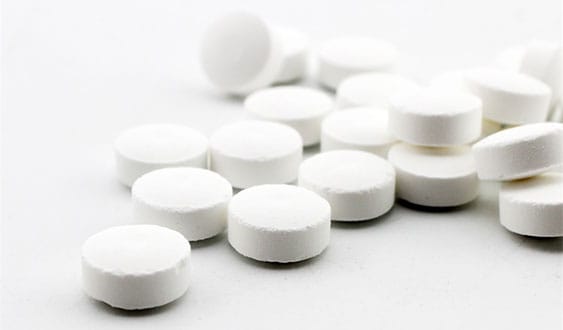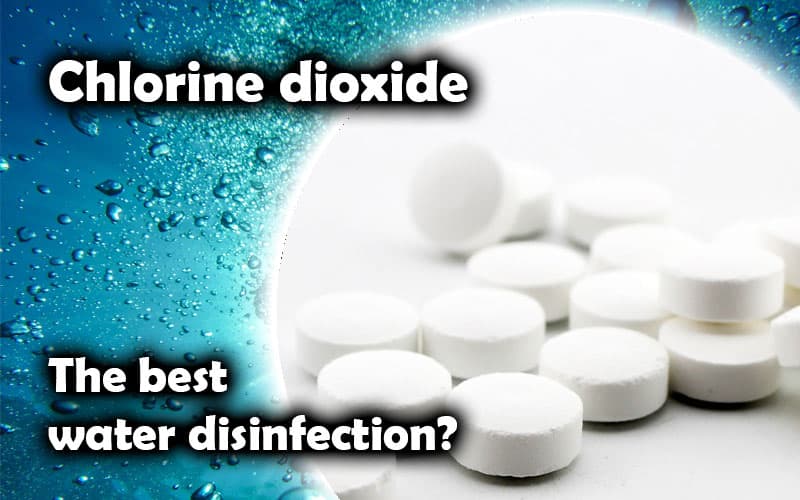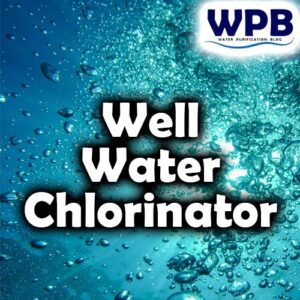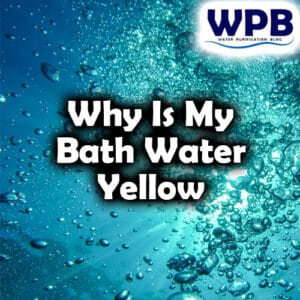Chlorine dioxide (ClO2) is a chemical compound that is a pale yellow to yellow-green gas at room temperature. It is a highly reactive compound that is used in a variety of applications, including water disinfection and treatment, pulp bleaching, and the production of pharmaceuticals and chemicals.
Table of Contents
Chlorine dioxide water disinfection
Disinfection of drinking water with chlorine dioxide is the process of killing harmful microorganisms by dosing chlorine dioxide into the water.
What is chlorine dioxide?
It is a synthetic, green-yellow gas with a very irritating odor similar to chlorine.
Chemically it is very different from elemental chlorine, both in chemical structure and behavior.
It is a small, volatile and very strong molecule. In dilute, aqueous solutions, it is a free radical. In high concentrations, it reacts violently with reducing agents.
It is an unstable gas that splits into chlorine gas (Cl2), oxygen gas and heat. When chlorine dioxide is photo-oxidized by sunlight, it breaks down.
How is chlorine dioxide produced?
Chlorine dioxide can be produced through a chemical reaction between sodium chlorite and an acid. This reaction can be carried out by mixing a solution of sodium chlorite with a solution of an acid, such as hydrochloric acid or sulfuric acid. The resulting solution will contain chlorine dioxide and sodium chloride.
It is important to note that the production of chlorine dioxide requires careful handling and should be carried out by trained professionals in a properly equipped laboratory or industrial setting.
Chlorine dioxide forms
Chlorine dioxide can be prepared on site with specialized equipment. As this is a fairly complicated way of getting chlorine dioxide, more common is the usage of already prepared chlorine dioxide in liquid, powder of tablet forms.

Chlorine dioxide most important properties
- It is a strong oxidizing agent, meaning that it can easily transfer electrons to other compounds and cause them to be oxidized (lose electrons). This makes it effective at killing bacteria and other microorganisms, as well as removing impurities from water and other materials. This is why chlorine dioxide water disinfection is so effective.
- It is highly soluble in water, making it easy to dissolve and distribute in aqueous solutions.
- It is a highly volatile compound, meaning that it easily evaporates and diffuses into the air at room temperature. This can make it difficult to contain and handle, as it requires special handling procedures to prevent accidental releases.
- It is a corrosive compound that can damage materials such as metals, plastics, and rubber. It should be handled with care to avoid damaging equipment or causing injury.
- It can be toxic if inhaled or ingested in large quantities. It can also cause irritation to the skin, eyes, and respiratory system.
Chlorine dioxide storage
The best way to store pure chlorine dioxide is as a liquid. In this state it is quite stable.
It cannot be stored for too long, because it slowly splits into chlorine and oxygen. When the concentration of chlorine dioxide is higher than 10% in the air, there is a danger of explosion.
In aqueous solutions, it remains stable and soluble. Aqueous solutions containing approximately 1% chlorine dioxide can be stored safely, provided they are protected from light and heat.
The longest way of storage is in powder or tablet forms.
Chlorine dioxide water disinfection tablets
Chlorine dioxide water disinfection tablets are solid tablets that are used to generate chlorine dioxide gas when dissolved in water. The tablets contain a combination of chemicals that, when mixed with water, react to produce chlorine dioxide gas. The tablets are commonly used as a disinfectant for water treatment and other applications, such as purifying drinking water or cleaning equipment.
Chlorine dioxide tablets are convenient to use because they can be easily transported and stored, and they are also easy to dispense by simply dropping the tablets into a container of water.
However, they should be handled with care because they can be toxic if ingested or inhaled in large quantities. It is important to take precautions to avoid accidental ingestion or inhalation.
Chlorine dioxide drinking water disinfection – the principle
Chlorine dioxide water disinfection is done through oxidation. It is the only biocide that is a molecular free radical. It has 19 electrons and prefers substances that give or take an electron. Chlorine dioxide only reacts with substances that donate electrons.
Substances of an organic nature in the bacterial cells react with chlorine dioxide, causing several cellular processes to be interrupted. It reacts directly with amino acids and ribonucleic acid in the cell. Protein production is inhibited. Chlorine dioxide affects the cell membrane by changing the proteins and lipids of the membrane and preventing inhalation.
Viruses are eliminated in another way. Chlorine dioxide reacts with peptone, a water-soluble substance derived from the hydrolysis of proteins into amino acids. It kills viruses by preventing protein formation. It is also more effective against viruses than chlorine or ozone.
Chlorine dioxide is one of the disinfectants that are effective against Giardia and Cryptosporidium parasites, which are found in drinking water. The best protection against protozoa is disinfection with a combination of ozone and chlorine dioxide.
Chlorine dioxide water Disinfection by-products
The reaction process of chlorine dioxide with bacteria and other substances takes place in two phases. During this disinfection process, by-products are formed which remain in the water.
In the first phase, the chlorine dioxide molecule receives an electron and chlorite (ClO3) is formed. In the second phase, chlorine dioxide receives 4 electrons and creates chloride (Cl–). Some chlorate (ClO3), which is formed by the formation of chlorine dioxide, can also be found in the water.
Both chlorate and chlorite are oxidizing agents. Chlorine dioxide, chlorate and chlorite are separated into sodium chloride (NaCl).
Chlorine dioxide water Disinfection in swimming pools
Chlorine dioxide is generally considered to be safer and less irritating to skin and eyes than other chlorine-based disinfectants, making it a popular choice for use in swimming pools. However, it can be more expensive to use and requires special handling procedures to ensure that it is used safely and effectively.
Disinfection of water – advantages
- Chlorine dioxide is a very effective bacterial disinfectant and is more effective than chlorine for disinfecting water containing viruses.
- It effectively deactivates the chlorine resistant pathogens Giardia and Cryptosporidium
- Chlorine dioxide removes and prevents biofilm
- Disinfection with chlorine dioxide does not cause an unpleasant smell
- It destroys phenols, which can cause odor and taste problems
- Chlorine dioxide is more effective for removing iron and manganese than chlorine, especially when they are in complex substances
- Using chlorine dioxide instead of chlorine prevents the formation of harmful halogenated disinfection byproducts, such as trihalomethanes
- Unlike chlorine, chlorine dioxide is effective at a pH between 5 and 10
chlorine dioxide places of use
Chlorine dioxide can be used in public utilities in drinking water purification systems and industrial facilities including hospitals.
It is used for disinfection of irrigation systems (empty pipelines), waste water, disinfection of surfaces that are cleaned with water (floors, walls, equipment) in the food industry, milk, meat, slaughterhouses, beverage and beer industry, fruit and vegetable processing, hospitals, drinking water systems, etc.
Conclusion
Chlorine dioxide is a highly effective disinfectant and oxidizing agent that has a wide range of applications in various industries. It is particularly useful in water treatment plants, where it is used to kill bacteria and other harmful microorganisms in the water supply.
However, it is important to use chlorine dioxide carefully and in appropriate concentrations, as it can be toxic if inhaled or ingested in high amounts. Proper training and safety measures should be taken when handling chlorine dioxide to ensure the safety of workers and the public.
Despite its potential dangers, when used properly, chlorine dioxide can be a valuable tool in promoting public health and safety.

Who am I?
I am working as a water treatment technical manager and I have more than 25 years of practical experience in water purification.
Water purification expert
After many years of experience in water purification, I want to share some of my knowledge and get people to know the real importance of water quality.
Water purification and water treatment are very complex themes, so it is important to explain them in an easy-to-read way.
On this blog, you will find many understandable, easy-to-read information about water purification.
I hope you enjoy it, find some useful information, and thank You for reading.
More info on my work and my expertise on water purification can be found on my LinkedIn profile.






